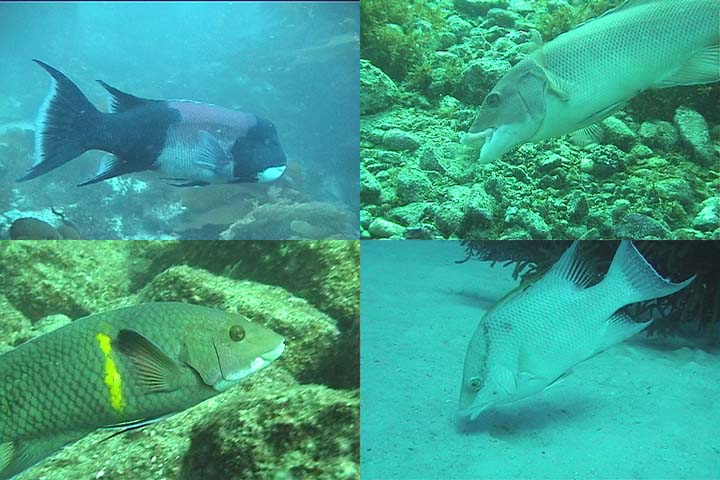

Last week I wrote about my friend Dick Murphy's book comparing coral reefs and human cities. There are other comparisons beyond how each system uses energy or recycles wastes. With your indulgence I'm going to use his book to introduce another concept of biological significance, that of "ecological equivalents."
Except perhaps for those already retired (envy!), most adult residents of Avalon function within our local economic system. They have an economic role in our community, sometimes referred to as a "job" (a concept I barely remember). We are no longer the "generalists" of our country's rural roots. Back then, especially during early settlement, families had to be fairly self-sufficient. They built their own homes, raised their own crops and domestic animals, made the necessary repairs, etc. In today's economy most of us are "specialists" and no longer fulfill such a wide range of roles. I wouldn't even consider building my own home (nor would the City's planning department let me!). If I need food for dinner, I go to Von's rather than run out in the hills with my rifle. When I need a large appliance repaired or replaced, I call on someone who has specialized knowledge in this area. Even those new to our community can locate these specialists by letting their fingers do the walking or asking their new neighbors.
Unfortunately the high cost of housing and living in this town drives many to relocate after a few years so they can realize the "American dream" of owning their own home. When they do, it is not difficult to locate equivalent specialists in their new communities. Word of mouth or a little "finger walking" will find someone who can perform the same function in the new community as their contractor, plumber or electrician here. People who perform the same functions within two different human communities might be considered "economic equivalents." They have the same job description or role in their respective community.
Ecological systems like kelp forests or coral reefs have a similar situation. Species are present in both that serve as the energy gatherers, the cleaners, the top predators, the scavengers, etc. Species that serve similar roles within different ecosystems are called "ecological equivalents." Their job (or niche) in each system is similar. For example, the giant kelp in our own waters performs a similar function to the plant (phyto) plankton in open waters, the zooxanthellae within corals, or the smaller algae that are found on coral reefs. All are energy collectors or primary producers, absorbing solar energy in the form of light and converting it into chemical energy stored in their tissues. This chemical energy becomes food for all the other species within their respective ecosystems through the elaborate food webs in each.
One of the things I really enjoy about diving in new areas is the opportunity to observe and to try reconstructing how the new system functions... what are its ecological equivalents to those I'm familiar with in our own kelp forests. Previously I've mentioned that while diving in the Sea of Cortez I was really curious about "who" fixes the energy in that system since there were no kelp or large algae apparent. In time I discovered that there were "energy fixers" present but that the parrotfish, surgeonfish and others kept them closely cropped.
Two examples of ecological equivalents from the fish world further illustrate this concept. I've written about our local senorita (and senors!) who serve as cleaner species in our kelp forests. Their role is similar to the rainbow wrasse in the Sea of Cortez or the bluehead wrasse in Belize and Honduras. All three species clean parasites and diseased tissue from other fish species and therefore fill specialized "niches" or roles in their ecosystems which are equivalent. Most of us are familiar with the sheephead here... whether as divers and snorkelers, or as dinner if we fish. Sheephead have a specialized niche as well. They are invertebrate feeders who often dig through bottom sediments to find worms and other "delicacies." In the Sea of Cortez the ecological equivalent would be the Mexican hogfish which looks similar to our sheephead if you disregard the colors. In Belize the hogfish is the equivalent of these two.
Hopefully most of my readers will remain happily in their communities and not have to locate "economic equivalents." As a biologist, I find it a good intellectual challenge to locate ecological equivalents in all the areas I dive. It is a great deal of fun to try to put together the puzzle of a complex community food web from these pieces. The only "equivalent" that I have been unsuccessful in finding is that mermaid who will become my permanent dive buddy. Of course I keep on trying! My latest effort is to join the SingleDivers.com website which may be of interest to other single divers who read this column. At least you'll know potential partners on that board share one of your passions! I'm even "talking" to one now about diving the Red Sea or the Galapagos!
© 2004 Dr. Bill Bushing. Watch the "Dive Dry with Dr. Bill" underwater videos on Catalina Cable TV channel 49, 10:00 AM and 5:00 PM weekdays.

Our own California sheephead (top left male, right
female) with its Sea of Cortez ecological equivalent,
the Mexican hogfish
(lower left) and one from the northwest Caribbean, the hogfish (lower
right).
This document maintained by
Dr. Bill Bushing.
Material
© 2004 Star Thrower Educational Multimedia